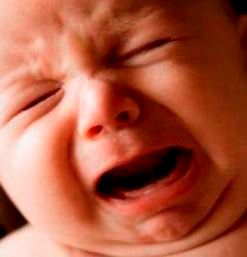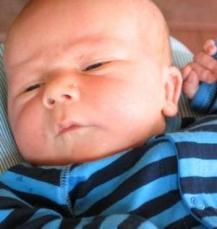Respiratory Syncytial Virus: Practice Pearls for Pediatricians

Respiratory syncytial virus (RSV) is a major respiratory pathogen and is the leading cause of hospitalization for infants in the United States. The virus spreads effectively within a household, a day care center, or a medical facility because infected persons can shed the virus in nasopharyngeal secretions for up to 3 weeks and because the virus can survive in the environment for up to 6 hours.1,2
Half of all children in the United States have been infected with RSV by their first birthday, and virtually all have been infected by age 2 years. However, infection does not confer long-lasting immunity and reinfection is common.
Risk Factors
Uncomplicated RSV infection presents with rhinorrhea, cough, and fever. Even uncomplicated disease can progress to lower respiratory tract infections, including bronchiolitis and viral pneumonia. Infected children may experience respiratory distress, sometimes apnea and/or cyanosis, and wheezing and rhonchi.
Each year, between 0.5% and 2% otherwise healthy children are hospitalized with RSV infection.3 Hospitalization rates and severity of the illness are significantly increased among 5 high-risk groups of children with:3,4
• Chronic lung diseases, particularly bronchopulmonary dysplasia
• Cardiac diseases, particularly congenital heart diseases with pulmonary hypertension or cyanosis
• Neuromuscular disorders
• Immune deficiency, particularly severe combined immune deficiency and advanced HIV infection
• Underdeveloped lungs because of preterm delivery
Children with chronic lung disease have hyperresponsive airways and reduced lung capacity. Those with cardiac disease often have changes in pulmonary vasculatures that could result in pulmonary hypertension or pulmonary edema.5 Neuromuscular diseases decrease respiratory muscle strength, and immune deficiency impairs the ability to eliminate the virus. Premature infants are at increased risk for severe RSV infection because their lungs are underdeveloped and immune systems immature.
A number of factors can raise the risk for severe disease further. These include overcrowding, day care attendance, having school-aged siblings, passive smoke exposure, and birth within 6 months before the start of RSV season.6

Physical Diagnostic Signs
In addition to keeping the various risk factors in mind, pediatricians need to pay specific attention to physical examination findings when evaluating children with possible RSV infection. All aspects of the physical examination- including the use of accessory respiratory muscles and quality of breath sounds-are important. Measurement of oxygen saturation by pulse oxymetry is essential. In children and infants, pulsus paradoxus should be considered a red flag of impending respiratory failure.7 (During inspiration, systolic blood pressure normally drops by 4 to 10 mm Hg. However, if the change in pulse pressure between inspiration and expiration is felt when the child’s pulse is palpated, it is believed that the pulsus parodoxus is above 20 mm Hg, indicating severe respiratory compromise.) All physical signs must be analyzed together: no single sign indicates the severity of RSV infection.
Management
The management of RSV infection remains controversial and limited. Ribavirin, palivizumab, inhaled bronchodilators, and inhaled or systemic corticosteroids provide little or no clinical benefit. Current treatment relies on support measures, including oxygen supplementation, monitoring for apnea, nutrition support, intravenous fluids, and, if required, respiratory support with nasal bi-level positive-airway pressure or mechanical ventilation.
A promising new development is the use of hypertonic saline inhalation, which could become a new tool for management of RSV infection.8
The American Academy of Pediatrics recommends RSV prophylaxis with palivizumab during RSV season for high-risk populations.9 Palivizumab, at 15 mg/kg, is given intramuscularly once a month for five doses during RSV season-usually between November and March, depending on the RSV epidemic in the local community. Palivizumb prophylaxis is indicated for:
• Children younger than 24 months who have required medical therapy for chronic lung disease within 6 months preceding the start of RSV season
• Children younger than 24 months of age with hemodynamically significant congenital heart disease
• Infants younger than 12 months of age with significant airway abnormalities or neuromuscular disease
• Infants born at 32 weeks’ gestation or earlier
Those with chronic lung disease who require therapy may also benefit from prophylaxis during a second RSV season. Consider prophylaxis for infants born between 32 and 35 weeks’ gestation if they were born within 3 months before the start of, or during RSV season, and if they attend day care outside the home or live with children younger than age 5 years. Prophylaxis for this group is given monthly till the age of 90 days.
References:
References
1. Hall CB, Douglas RG, Jr, Geiman JM. Possible transmission by fomites of respiratory syncytial virus. J Infect Dis. 1980;141:98-102.
2. Hall CB, Douglas RG, Jr, Geiman JM. Respiratory syncytial virus infections in infants: quantitation and duration of shedding. J Pediatr. 1976;89:11-15.
3. Boyce TG, Mellen BG, Mitchel EF, Jr, et al. Rates of hospitalization for respiratory syncytial virus infection among children in medicaid. J Pediatr. 2000;137:865-870.
4.Simon A, Ammann RA, Wilkesmann A, et al. Respiratory syncytial virus infection in 406 hospitalized premature infants: results from a prospective German multicentre database. Eur J Pediatr. 2007;166:1273-1283.
5.Kristensen K, Stensballe LG, Bjerre J, et al. Risk factors for respiratory syncytial virus hospitalisation in children with heart disease. Arch Dis Child. 2009;94:785-789.
6.Carbonell-Estrany X, Quero J. Hospitalization rates for respiratory syncytial virus infection in premature infants born during two consecutive seasons. Pediatr Infect Dis J. 2001;20:874-879.
7.Frey B, Freezer N. Diagnostic value and pathophysiologic basis of pulsus paradoxus in infants and children with respiratory disease. Pediatr Pulmonol. 2001;31:138-143.
8.Zhang L, Mendoza-Sassi RA, Wainwright C, Klassen TP. Nebulized hypertonic saline solution for acute bronchiolitis in infants. Cochrane Database Syst Rev. 2008:CD006458.
9. From the American Academy of Pediatrics: Policy statements--Modified recommendations for use of palivizumab for prevention of respiratory syncytial virus infections. Pediatrics. 2009;124:1694-1701.
The Role of the Healthcare Provider Community in Increasing Public Awareness of RSV in All Infants
April 2nd 2022Scott Kober sits down with Dr. Joseph Domachowske, Professor of Pediatrics, Professor of Microbiology and Immunology, and Director of the Global Maternal-Child and Pediatric Health Program at the SUNY Upstate Medical University.
Infants exclusively fed breast milk at birth less likely to develop asthma
September 28th 2024Infants were 22% less likely to develop asthma in early childhood if there were only fed breast milk during birth hospitalization, per a study presented at the 2024 AAP National Conference & Exhibition.